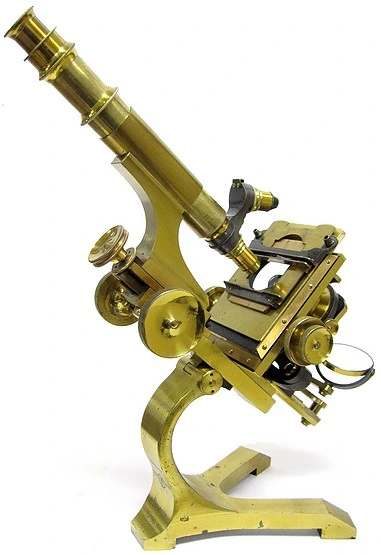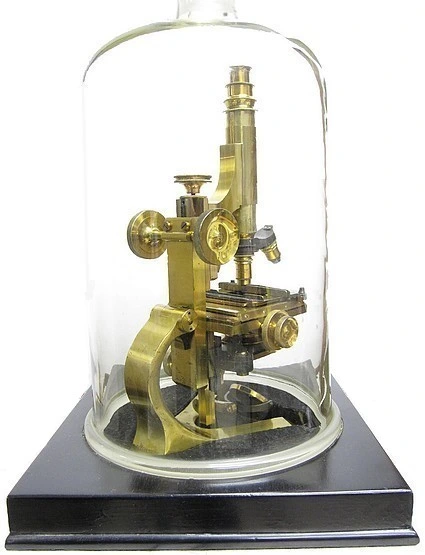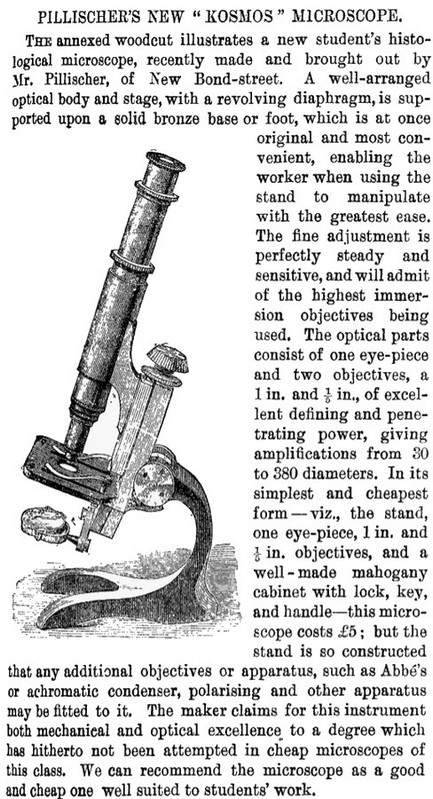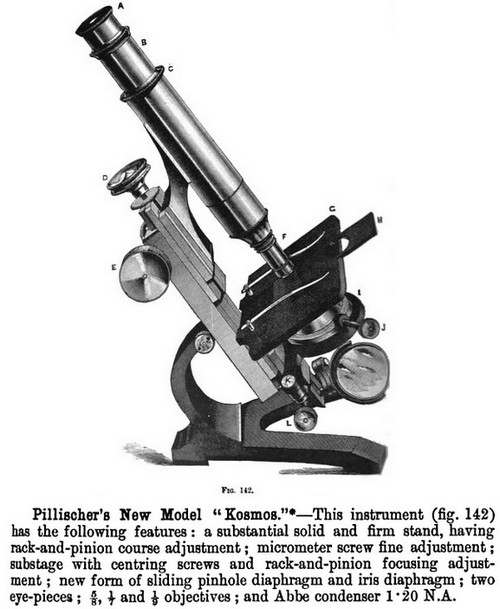The following was
extracted from The Microscope. Its History, Construction, And
Application. J. Hogg, 15th Edition. 1898
The "Kosmos" is Pillischer's cheaper model The
stand of this somewhat novel and original microscope is framed
entirely of brass and gun-metal. The fine adjustment is very
sensitive and perfectly steady, admitting of the highest immersion
objectives being used. The optical parts are constructed upon
principles consistent with the latest improvements. It has a
claw-foot stand with a semi-circular arm, which carries the body,
with sliding-tube coarse adjustment. and micrometer screw fine
adjustment, with a large square stage diaphragm and mirror. The
instrument is neatly packed in a mahogany box, together with the A
or B eye-piece, 1-inch and 1/5-inch objectives of good defining and
penetrating power, magnifying from 30 to 380 diameters, in mahogany
cabinet, for the moderate sum of 5 pounds. {The instrument shown here is evidently a
more advanced version than the one described above by Hogg having
the addition of rack and pinion focusing of the tube, a full
focusing and centering sub-stage, a mechanical stage, a more
complete set of objectives and eyepieces, and other accessories}
The following was
extracted from Optical Convention, 1912. Catalogue of Optical
and General Scientific Instruments
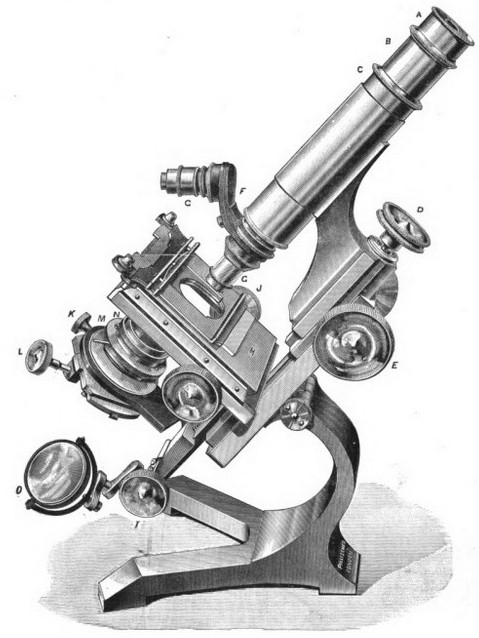
The Kosmos Microscope.—This large
stand is specially designed for bacteriological and kindred
investigations, care having been taken to obtain steadiness and true
adjustments.
Rack and pinion coarse adjustment and
micrometer fine adjustment. Draw-tube graduated in inches and
millimetres. The optical body is inclinable and well balanced in all
positions.
Mechanical screw-stage with 1 in.
adjustments in rectangular directions, sliding and rotating plate
with spring clamps to hold objects firmly in position. Substage with
centering screws, iris diaphragm, parallel diaphragm with rack and
pinion adjustment for oblique light illumination, Abbe condenser 140
N.A. and piano and concave mirrors.
Height of stand when racked down Size of
stage ....12 1/2 in.
Size of stage .... 4 1/4 x 3 3/4 in.
Moritz Pillischer established his business as a
scientific instrument maker around the 1840's. He made or sold a
variety of scientific instruments and is well known for his
microscopes. He retired in 1887 and the business was taken over by
his nephew, Jacob Pilliischer. The firm continued well into the 20th
century.
See the Pillischer Family Timeline. Also, see this detailed
essay on the Pillischer microscopes and business.




